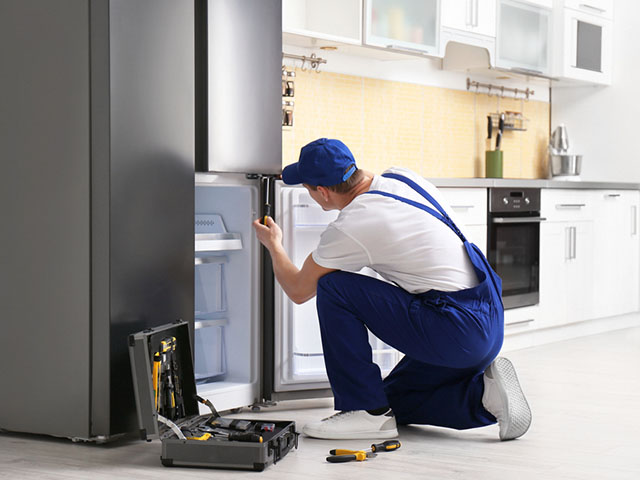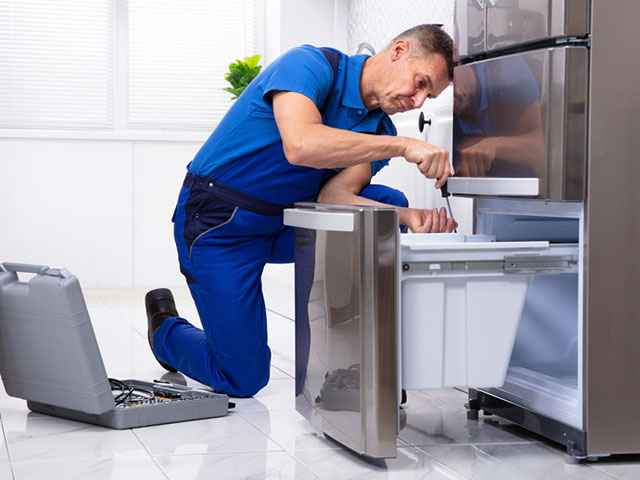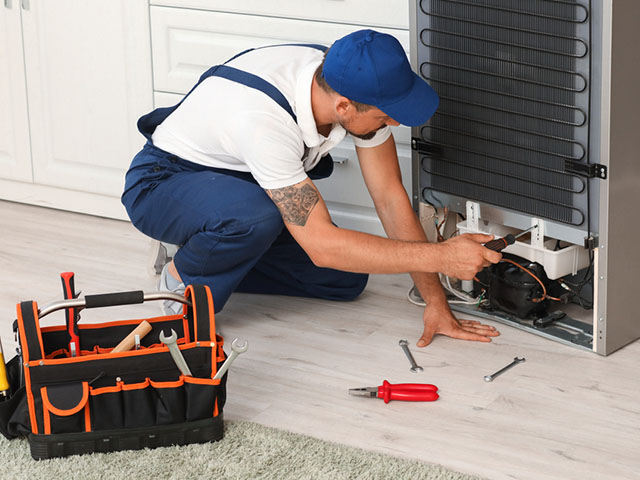A refrigerator is an essential household appliance, but when it suddenly stops cooling, it can lead to spoiled groceries and a headache for homeowners. If your refrigerator isn’t maintaining the cool temperatures it should, don’t panic. There are several quick fixes you can try before calling a technician. Here are five solutions that might just save your groceries and get your refrigerator back in working order.
Table of Contents
1. Check the Thermostat Settings
One of the first things you should do when your refrigerator isn’t cooling is to check the thermostat settings. It might seem too simple, but accidentally adjusting the temperature settings happens more often than you think.
- Locate the Thermostat: Typically, the thermostat dial or digital control panel is inside the refrigerator, either along the back wall or near the top.
- Set the Temperature: The ideal refrigerator temperature should be set between 35°F and 38°F (1.6°C and 3.3°C). If the thermostat is set too high, the fridge won’t stay cold enough to preserve your food.
- Adjust the Dial or Controls: If your thermostat was set higher than the recommended range, turn it down and wait a few hours to see if the fridge cools down.
While this might seem like an easy fix, sometimes simply resetting the thermostat can solve the cooling problem.
2. Inspect the Door Seals for Leaks
Your refrigerator door seal, also known as the gasket, is essential for keeping the cold air in and the warm air out. If the seals are damaged, worn out, or dirty, warm air can seep into the fridge, preventing it from cooling properly.
- Visual Inspection: Check for any cracks, gaps, or wear and tear along the gasket. If the seal looks cracked or brittle, it may need to be replaced.
- Do the Dollar Bill Test: Place a dollar bill between the door and the seal, then close the door. If the bill slides out easily, your seals may not be tight enough. Repeat this test around the entire perimeter of the door.
- Clean the Gasket: Sometimes, dirt or food particles accumulate on the seals, causing an imperfect seal. Use a damp cloth and mild detergent to clean the gaskets thoroughly.
Tip: If your gasket is damaged beyond repair, replacing it can drastically improve the refrigerator’s cooling performance.

3. Ensure Proper Air Circulation Inside the Refrigerator
Overstuffing your refrigerator can lead to poor air circulation, which may prevent it from cooling efficiently. Your fridge needs space to circulate cold air evenly throughout the compartments.
- Avoid Overpacking: Ensure that food items aren’t blocking the vents inside your refrigerator. These vents allow cool air to flow freely. Blocking them can lead to inconsistent cooling or warm spots.
- Organize Your Food: Properly organize your fridge so that air can circulate around your food. Leave space between items, especially near the back and sides of the fridge.
- Keep It Balanced: A good rule of thumb is to keep your refrigerator at about 75% full. This allows enough air to circulate while maintaining a stable temperature.
A well-ventilated fridge not only cools better but also extends the life of your food.
4. Check and Clean the Condenser Coils
The condenser coils are responsible for releasing heat from the fridge. Over time, these coils can become clogged with dust, dirt, and pet hair, which can cause your refrigerator to overheat and stop cooling efficiently.
- Locate the Coils: Typically, condenser coils are located either behind the refrigerator or underneath it. Refer to your fridge’s manual to find their exact location.
- Unplug and Clean: Before cleaning, unplug your refrigerator. Use a vacuum or a soft brush to remove any dirt and debris from the coils. Cleaning these coils every six months can improve your fridge’s efficiency and cooling power.
- Replug and Wait: After cleaning, plug the refrigerator back in and give it a few hours to see if the cooling improves.
Regular maintenance of your condenser coils can help prevent major cooling problems in the future.
5. Examine the Evaporator Fan and Condenser Fan
The evaporator fan inside your refrigerator is responsible for circulating cold air from the freezer to the fridge compartment. If this fan isn’t working properly, your refrigerator might not cool as it should. Similarly, the condenser fan works to cool the compressor and the condenser coils.
- Listen for Noise: If you hear unusual noises coming from the back or inside of your fridge, it could be a sign that one of these fans is malfunctioning.
- Check for Obstructions: Sometimes, debris or ice buildup can block the fans from spinning properly. Inspect both the evaporator and condenser fans to ensure there are no obstructions.
- Fan Replacement: If either fan is broken or not spinning at all, it may need to be replaced. You can often order replacement parts online, or call a professional technician for repairs.
Both fans play a crucial role in keeping your refrigerator cold, so addressing any issues with them promptly can prevent further problems.

When to Call a Professional
If you’ve tried these quick fixes and your refrigerator is still not cooling, it might be time to call a professional for refrigerator repair services. More complex issues, such as a malfunctioning compressor or a refrigerant leak, may require the expertise of a trained technician. Ignoring these issues could lead to further damage and costly appliance repairs down the line.
A professional from 5 Star Appliance Repair can accurately diagnose the problem and provide a long-term solution, ensuring your refrigerator keeps your groceries fresh for years to come.
Conclusion
If your refrigerator isn’t cooling, these simple troubleshooting steps—adjusting the thermostat, inspecting door seals, improving air circulation, cleaning the condenser coils, and checking the fans—can often resolve the issue. However, if these fixes don’t work, it’s essential to call a certified technician to avoid further damage. Complex problems like compressor failure or refrigerant leaks require professional expertise.
Technicians from 5 Star Appliance Repair can accurately diagnose and fix the issue, ensuring your refrigerator returns to optimal performance and keeps your groceries fresh. Don’t wait—protect your appliance and food by seeking expert help today!
FAQs
Why is my refrigerator not cooling even though it's running?
Your thermostat might be set too high, or the door seals could be leaking warm air. Simple fixes like adjusting the temperature or cleaning the gasket can restore cooling.
How can I tell if my refrigerator door seal is faulty?
Perform the dollar bill test by closing a dollar between the door and seal—if it slides out easily, the seal is worn. Inspect for cracks and clean the gasket to ensure a proper seal.
What happens if I overstuff my refrigerator?
Overpacking blocks vents and restricts airflow, leading to uneven cooling or warm spots. Organize food and maintain proper spacing for optimal air circulation.
How often should I clean my refrigerator’s condenser coils?
Clean the condenser coils every six months to prevent dust buildup, which can cause overheating and cooling issues. Regular maintenance helps improve your refrigerator’s efficiency.


